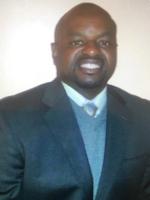Empowering Sustainability Solutionaries through Inclusion, Virtual Reality, and PBL
,
Colorado Convention Center, Innovation Arcade: AR/VR Exploration Lab A
Presenters




Session description
Purpose & objective
Improving the knowledge and educational outcomes of diverse populations by showcasing the transformative potential of VR and assistive technology in STEM education. By exploring the intersection of these innovative tools, attendees gain insights into how VR can create immersive and interactive learning experiences that cater to diverse learning styles. They learn about the benefits of visualizing complex concepts, conducting virtual experiments, and engaging in collaborative problem-solving, which enhances understanding and critical thinking skills. The presentation equips attendees with practical insights, resources, and strategies to integrate VR into their classrooms, empowering students of all abilities to excel in STEM subjects. Benefiting historically marginalized groups by addressing the challenges faced by underrepresented students with disabilities in STEM education. By highlighting the potential of VR as an AT, attendees gain an understanding of how it can bridge the educational gap and promote equal opportunities for historically marginalized groups. The emphasis on social inclusion and accessibility considerations ensures that VR experiences are designed to accommodate diverse needs and foster an inclusive learning environment. By empowering students with VR experiences, historically marginalized groups gain access to innovative learning tools and resources that enhance their educational experiences and increase their chances of success in STEM fields.
Outline
This presentation improves teachers' practice and student performance by equipping educators with practical strategies and insights to integrate VR into their classrooms. Teachers learn how to create immersive and interactive learning experiences that enhance student engagement, understanding, and critical thinking skills. By implementing VR in their instruction, teachers can personalize learning, cater to diverse learning needs, and foster collaboration among students. Three strategies that can be implemented immediately by practitioners in the field are: 1) Incorporating VR simulations and interactive scenarios to provide hands-on learning experiences. This strategy allows students to explore complex concepts in a safe and inclusive environment, promoting deeper understanding and retention. 2) Customizing VR experiences to accommodate diverse learning styles and needs. By adapting the content and settings of VR applications, teachers can ensure that all students, including those with disabilities or unique learning requirements, can actively participate and benefit from the technology. 3) Utilizing VR and project-based learning in STEM/GREEN/XR curriculums. Teachers can guide students in using VR to design and create their own virtual projects, promoting creativity, problem-solving, and collaboration. By implementing these strategies, teachers can enhance their instructional practices and create dynamic learning environments that improve student performance, engagement, and outcomes.
Supporting research
The evidence of effectiveness for our presentation is rooted in the experiences and testimonials of practitioners who have integrated VR and assistive technology in STEM education for underrepresented students with disabilities. These practitioners have observed increased student engagement, motivation, and comprehension of complex STEM concepts through the immersive and interactive nature of VR. Practitioners have reported that VR allows students to visualize abstract concepts, conduct virtual experiments, and engage in collaborative problem-solving, catering to diverse learning styles. Students with disabilities have shown improved self-confidence and empowerment as VR provides equal access to hands-on learning experiences. Customizable features and adaptability have proven valuable in meeting individual student needs. Moreover, research studies have demonstrated the positive impact of VR on student outcomes, including enhanced spatial reasoning, critical thinking, and scientific inquiry skills. By sharing these practitioner experiences and research findings, we present concrete evidence of the effectiveness of VR and assistive technology in promoting inclusive and empowering learning environments for underrepresented students. Attendees will gain confidence in implementing these technologies and be inspired to improve educational outcomes in their own classrooms.
Session specifications
Laptop: Chromebook, Mac, PC
Tablet: Android, iOS, Windows
Equity and Citizenship Advocate
- Ensure all students have access to the technology and connectivity necessary to participate in authentic and engaging learning opportunities.
Learner
- Stay current with research that supports improved student learning outcomes, including findings from the learning sciences.
Innovative Designer
- Students exhibit a tolerance for ambiguity, perseverance and the capacity to work with open-ended problems.
| Related exhibitors: | Forward Education, Inspirit Learning Inc |
 Return
Return Innovation arcade: Exploration lab
Innovation arcade: Exploration lab  Trips and Tours
Trips and Tours